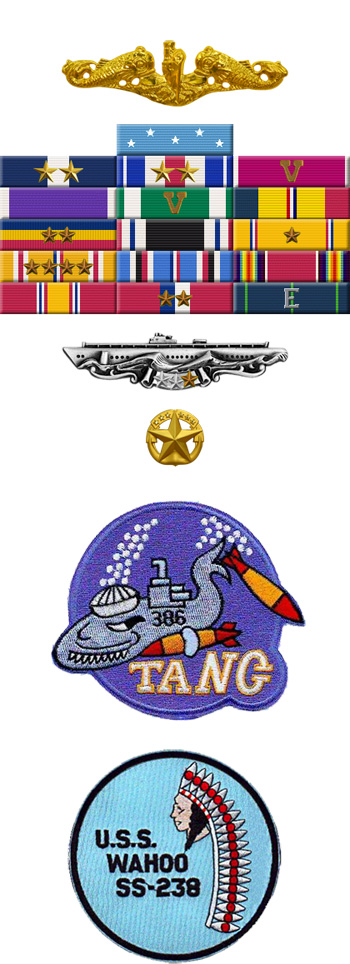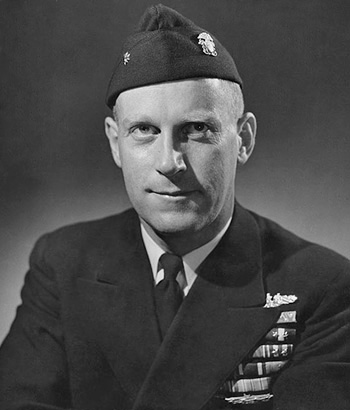
|
Richard H. O'Kane |
 |
|||
| Rank, Service | ||||
Rear Admiral O-8, U.S. Navy |
||||
| Veteran of: | ||||
|
||||
| Tribute: | ||||
Richard O'Kane was born on February 2, 1911, in Dover, New Hampshire. He entered the U.S. Naval Academy on July 5, 1930, and was commissioned an Ensign upon graduation on May 31, 1934. His first assignment was as a Deck and Gunnery Officer aboard the light cruiser USS Chester (CA-27) from June 1934 to June 1935, and aboard the destroyer USS Pruitt (DD-347) from June 1935 to December 1937. After completing Submarine School at New London, Connecticut, LT O'Kane served as Engineering Officer and Executive Officer aboard the submarine USS Argonaut (SM-1) from July 1938, through her first war patrol during World War II, to March 1942. His next assignment was as Executive Officer aboard the submarine USS Wahoo (SS-238) from her fitting out and commissioning, and during her first 5 war patrols, from March 1942 to July 1943. CDR O'Kane served as Commanding Officer of the submarine USS Tang (SS-306) during her fitting out and commissioning, and through all 5 of her war patrols, from August 1943 until surviving the sinking of the ship and being taken as a Prisoner of War by the Japanese on October 25, 1944. During his time as Commander of the USS Tang, he was credited with sinking 31 enemy ships totaling 231,500 tons, a record for American submarines. The USS Tang also rescued 22 downed aviators and 1 Japanese survivor. CDR O'Kane was released in August 1945, and was hospitalized to recover from his injuries until April 1946. His next assignment was as Commanding Officer of the submarine tender USS Pelias (AS-14) and on the staff of the Pacific Reserve Fleet at Mare Island, California, from April 1946 to July 1948, followed by service as Executive Officer of the submarine tender USS Nereus (AS-17) from August 1948 to August 1949. CDR O'Kane then commanded Submarine Division 32 from August 1949 to August 1950, followed by Armed Forces Staff College from August 1950 to January 1951. His next assignment was as an instructor at the Submarine School in New London from February 1951 to July 1952, and then as Officer in Charge of the school from July 1952 to July 1953. Capt O'Kane served as Commanding Officer of the submarine tender USS Sperry (AS-12) from August 1953 to June 1954, followed by service as Commander of Submarine Squadron 7 from July 1954 to June 1955. After attending the Naval War College, he served on the staff of the Ship Characteristics Board in the Office of the Chief of Naval Operations at the Pentagon from July 1956 until his retirement from the Navy on July 1, 1957. Richard O'Kane died on February 16, 1994, and was buried at Arlington National Cemetery. |
||||
|
||||

